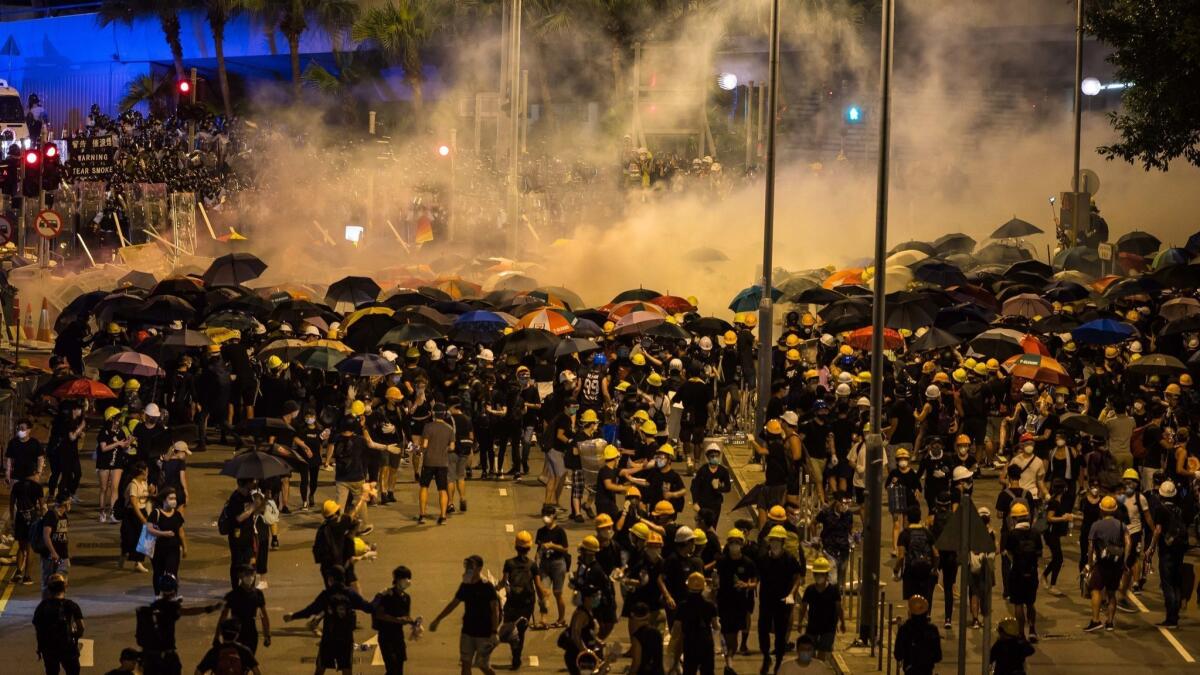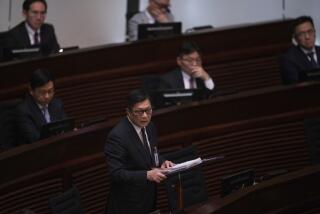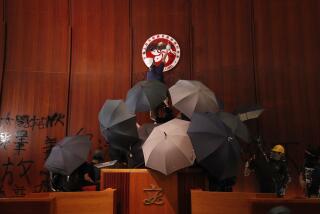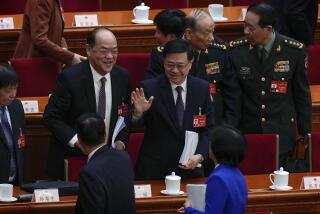Editorial: Hong Kong tests the limits of protest

Hong Kong has seen several waves of mass protests in the 22 years since its British rulers relinquished control to the Chinese government, yet most of those outbursts have been marked by a healthy dose of restraint. Residents demonstrated in 2003 and 2012 against bills that were perceived as efforts to extend Beijing’s power over the semiautonomous territory; they declared victory and stood down after the proposed legislation was withdrawn. The 2014 sit-ins known as the umbrella revolution — in which demonstrators demanded democratic elections — pushed a (nonviolent) step further, winding down in failure only after the arrest and imprisonment of several activists.
The most recent protests coalesced over a bill that would allow residents to be extradited to mainland China, a proposal widely seen as an effort to intimidate and silence Beijing’s critics. Protesters demanded that the bill be retracted, and they partially achieved that goal when Hong Kong Chief Executive Carrie Lam suspended the proposal late last month.
But this time there was no standing down. Protesters demanded that the bill be permanently scrapped, that Lam resign and that there be an independent investigation of police conduct. Then on Monday, the anniversary of the 1997 British handover, a faction of demonstrators escalated their challenge to Lam — and seemed to step back from their customary restraint — by sacking the Legislative Council building and spraying anti-government graffiti on the walls and portraits of various Hong Kong leaders.
Reconciliation is beginning to look less likely.
If they were trying to catch the attention of Lam’s backers in Beijing, they succeeded. The Chinese government branded the action “intolerable” and the protesters “criminals.”
It’s worth noting that the ransackers of the government building stopped to leave money to cover the price of refreshments they took. And despite being described as “violent,” they directed their anger only at property and not people.
But they are poking at the government of Chinese President Xi Jinping, and in so doing may be demonstrating the inherent incompatibility of Chinese rule and the freedoms to which Hong Kong residents aspire. Reconciliation is beginning to look less likely. In the balance is the territory’s treasured, but time-limited, semiautonomy from Beijing.
The treaty that ended 156 years of British colonial rule in Hong Kong guarantees residents of the territory the continuation of capitalism, an independent judiciary and freedom of expression for 50 years — a period that runs to 2047. To their credit, Hong Kong residents also have insisted on a measure of democracy that they never enjoyed until the tail end of British rule. But various promises of universal suffrage have been turned aside by the Beijing-backed government or reinterpreted as to make them ineffectual.
A largely impoverished but emerging China was willing to embrace a “one country, two systems” relationship with prosperous Hong Kong during the 1980s negotiations that culminated in the handover. Today, though, China is a world power and is less willing to stay out of Hong Kong’s affairs. The ex-colony and its Western-style civil rights are reminders of a series of 19th century humiliations in which Britain forced China to open itself to the opium trade and give up its territory at the mouth of the Pearl River in the southeastern part of the country.
Enter the Fray: First takes on the news of the minute »
Hong Kong unrest also serves as an inconvenient reminder of ethnic, language and cultural differences between northern and southern China, of the historic tension between Chinese unity and dismemberment, and of the continuing separation between Beijing and the “renegade province” of Taiwan.
The question for Xi is how much dissension he will tolerate and how much international backlash there might be if he further extends Beijing’s hand into Hong Kong’s supposedly separate affairs. He may try to present centralization as inevitable, despite the nearly three decades that still remain before Hong Kong fully reverts to China under the 1997 treaty.
Protesters, meanwhile, express a range of competing desires — continued autonomy, or expanded but geographically contained democracy, or Hong Kong independence. Or a unified, but democratic, China.
Follow the Opinion section on Twitter @latimesopinion and Facebook
More to Read
A cure for the common opinion
Get thought-provoking perspectives with our weekly newsletter.
You may occasionally receive promotional content from the Los Angeles Times.






